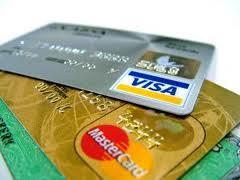 One of the first steps in wiping out debt is to pay off any credit card balances, since they usually carry the highest interest rates of any debt—today an average 15%. Here are 3 strategies for getting that balance paid off:
One of the first steps in wiping out debt is to pay off any credit card balances, since they usually carry the highest interest rates of any debt—today an average 15%. Here are 3 strategies for getting that balance paid off:
1. Pay it off with money from savings. If you have money in savings beyond what you need for an emergency fund, you may be better off using it to pay off your credit cards, since rates on savings accounts are near zero.
2. Reduce your interest rate. Call your credit card company and ask them to reduce your rate. You’ll be surprised that they will usually do it. And don’t take their first offer—ask if there isn’t an even lower rate they can give you. Then use the tools at creditcards.com/calculators to come up with an aggressive schedule to pay off your debt.
3. Take advantage of a 0% interest rate. To get new business, credit card companies are offering generous 0% interest introductory periods that may be as long as 10-18 months. This option could save you money if you can pay off the entire balance before the introductory period expires, because the subsequent interest rate will likely be high—maybe as high as 26%.
Example: You currently owe $10,000 at 14.45% and transfer it to a card with zero interest for 12 or more months. By paying it off in a year, you could save $800.
Strategy:
- Use creditcards.com/calculators to determine the amount of monthly payment required to pay off the entire balance before the introductory period expires. Confirm that you will be able to make these monthly payments for the entire introductory period.
- Be absolutely sure the balance is completely paid off before the expiration date of the introductory period. If you have even $1 owing on the last day, you may be charged the high interest rate retroactive to the first day of the loan.
- Before transferring your balance to the new card: (1) be sure that your credit score qualifies you for the zero percent rate and (2) consider the balance transfer fees (usually 3% of the balance), which for the example above would cost you $300. See creditcards.com/calculators to determine the effect of the transfer fees on your savings.
- Do not make any new purchases on the new card during the pay-off period, because they will be charged the higher rate and your payments will be applied to these purchases rather than to your planned pay-off.
Once you have the balance paid off, make it a habit not to charge more each month than you can completely pay off each month. Don’t use high credit card interest rates to finance impulse purchases. If you can’t pay off the balance completely each month, wait to make purchases until you have money saved up to pay for them.
Once the balance is paid off, switch to another card to get cash rewards up to 1.5% for all your purchases. Read about credit card rewards.



